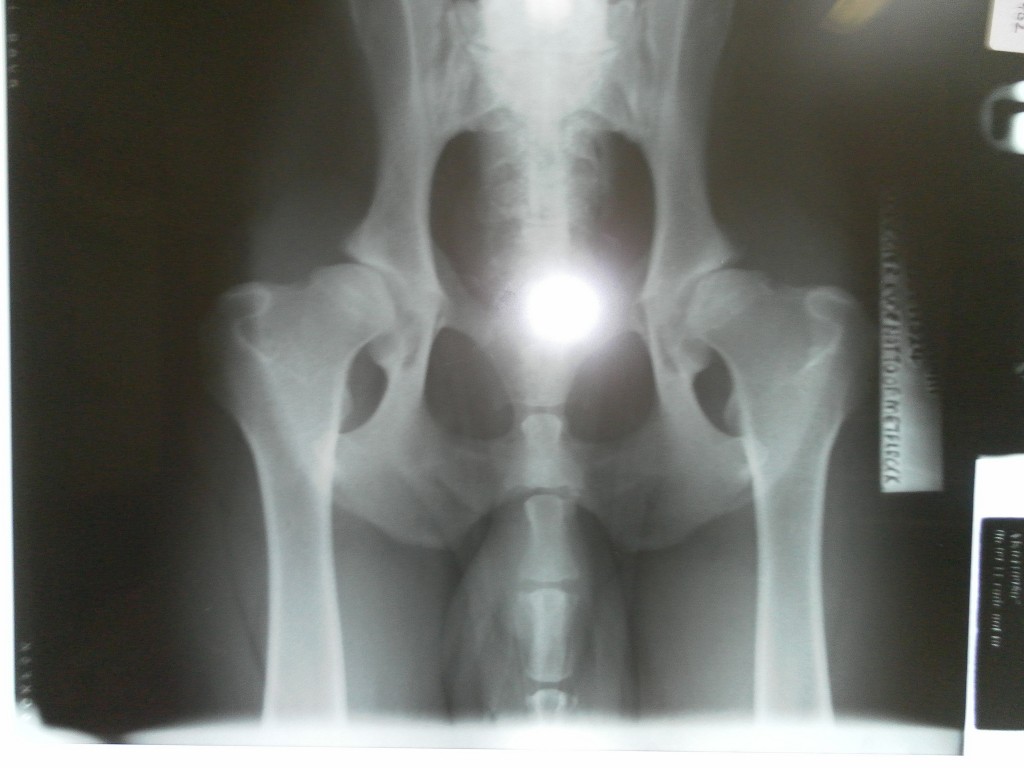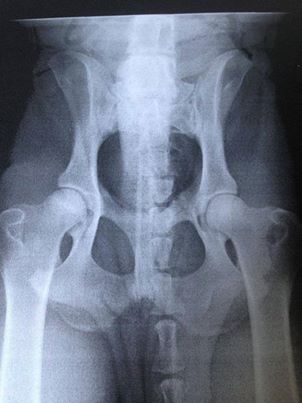Difficulty in getting up after rest
Difficulty in negotiating stairs (particularly up)
Difficulty in jumping in/out of cars
“Bunny hopping” gait when running
Characteristic sitting posture with legs pushed out to one side.

X-rays for “hip scoring” purposes can be done under General Anaesthetic or sedation depending on your veterinary practice’s policy. Some people prefer to have this procedure done under sedation rather than using a full GA and knocking the dog out entirely, while others would argue that for the dog to be placed in the optimal position it would need to be completely unconscious.
It is now preferred to have your dog’s elbows x-rayed and scored at the same time as having his hips done. Each breed has a specific list of health issues that should be screened for and for breeds who list hip problems as a possibility, only dogs with = or below the average score for their breed should be used in breeding programmes. If you are looking to buy a puppy and the breed you are considering is known to have a possible weakness of the hips, please ensure that the parents have been scored as average or below average and, if possible, look back at the scores of previous generations too to give your puppy the best chance of inheriting naturally healthy hips.
Not all HD problems are genetic. Some may arise due to the lifestyle of the puppy in his early months and years. It is important to minimise activities such as running up and down stairs, jumping in and out of the car or off furniture, long distance running by the side of a bicycle, agility training etc until the dog is at least a year or more of age (and with larger breeds, perhaps not until they are 18 months or so to be on the safe side.)

